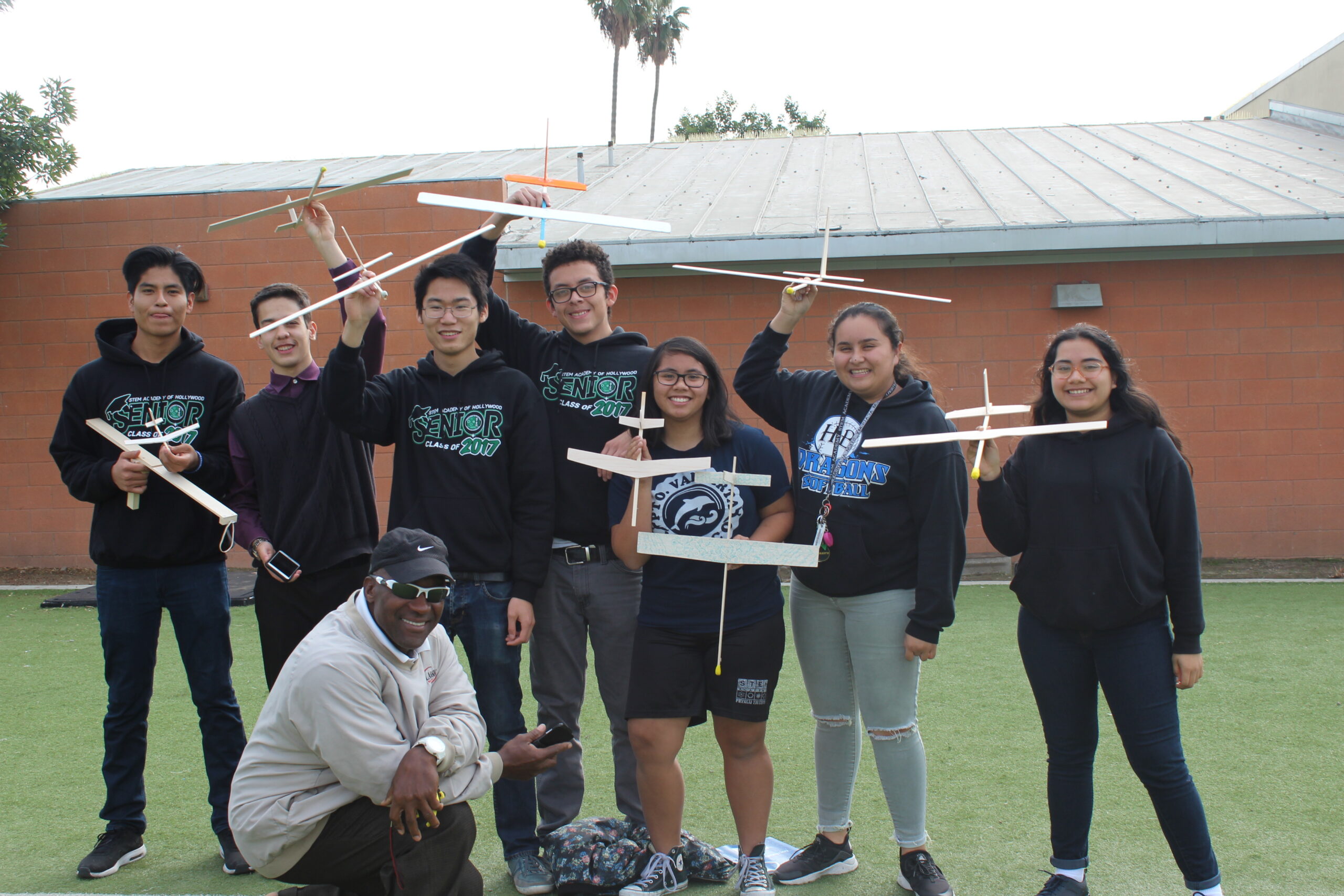
In 1973, if you’d asked young ‘DJ Jazzy Jay’, AKA Julian Lewis, what his future career would be, he would have told you that he was going to be a rapper. Fifty years ago, Lewis’ future in music and entertainment looked bright. But one encounter with his 7th grade band teacher Mr. Roughgarden set him on an entirely different path.
“In a casual conversation, I found out that Mr. Roughgarden had a Cessna 150 airplane. I asked, how can I get a ride on that airplane?” Julian recalls. “He told me, well, just bring a note from your parents and we’ll see what we can do. Well I did, after writing and signing that note, I got a ride. I was hooked on aerospace and aviation.”
Julian Lewis worked as an aerospace engineer for Lockheed Martin Aeronautics Company for 34 years, before he retired and became a teacher. After his tenure at Lockheed Martin, Lewis joined the EnCorps STEM Teachers Program® to chart a path to teaching. He applied his degree in Aeronautical Science, his practical experience, industry knowledge and his Career Technical Education (CTE) credentials to teach Aerospace Engineering at the STEM Academy of Hollywood high school.
One of his former students, Levi Velasquez, Air Force Officer with a degree in mechanical engineering clearly explains the value of STEM professionals in the classroom: “STEM at any education level is imperative regardless of where students decide to make a career in. It teaches students to think critically and make connections.”
As a retired STEM professional with over three decades of expertise, Lewis was able to bring a number of unique assets to his teaching, and offer his students a 360-degree view and hands-on experience connected to real world STEM experience from his work that they might not have had in an ordinary classroom. He was able to teach the engineering design process to his students which is the core engineering principal engineers use every day in the real world!
“I used my STEM professional experience in the classroom by making the curriculum project based,” Lewis says. “I had the kids learning to take something from concept to reality through the process of design, test and build. The end result of the project did not determine success. It was the process of visualizing a concept, designing, integrating, building, re-integrating, and looking at the performance and being able to demonstrate and talk about the process.”
Lewis was even able to use his industry experience to get resources for the classroom. “A 3D printer, a wind tunnel, drones, RC airplanes,” he lists. “We built structures like airfoils to prove the concept of coefficient of lift/drag. Every project was hands-on”. Lewis also had the good fortune to put his industry connections to use in sourcing guest speakers from the aerospace engineering industry, “So that students could actually hear other voices outside of mine, and better understand what the aerospace industry is all about”.
Lewis was also a mentor and a role model. “Seeing STEM professionals from those (marginalized) backgrounds can inspire and encourage similar individuals to step up and show the world just what they’re made of,” explains Stephanie Rivas-Lara, UCLA student pursuing a Master’s of Social Welfare.
Louis Perez, a former student and a computer science college graduate, credits Lewis for developing soft skills: “Although I learned a lot about aerospace and physics, Mr. Lewis also taught me the importance of integrity and leadership. He always used to say, you are a product of your environment. I always try to ensure that I am in the best environment I can be in.”
For others, it was Lewis’ belief in their abilities that had a life-long impact. “Mr. Lewis helped me find a passion for UAVs, Unmanned Air Vehicles. I researched universities with this program, and found Embry-Riddle Aeronautical University in Florida. Because of the demanding curriculum, steep tuition, and distance from California, not many people thought that attending this university was a good idea. Mr. Lewis continued to believe in me, and encouraged me, he was one of the few people that knew, and made me feel like, I would be successful,” shared Martin Chavez, AgEagle Aerial Technologies – Technical Support Engineer.
Now an EnCorps Board Member, Lewis leverages his personal experience transitioning from STEM professional to STEM teacher, as he guides EnCorps in fulfilling its mission to educate and inspire students who lack access to high-quality education in STEM subjects. “When students receive that early exposure to engineering, and they see that they can do something beyond their current environment — that’s the path forward in moving the needle to position them for opportunities in the future.”
Lewis can boast that his impact as an educator is long-lasting with several of his students from his very first graduating class currently working in STEM professions. Perhaps more importantly, Levis shaped individuals with the skills and the confidence to inform change, as explained by Patricio Ruano, 3rd Year Medical Student & Medical Instructional Assistant at Michigan State University – College of Human Medicine.
“Leverage was the word I associated with Mr. Lewis, as he taught us how to leverage the skills we brought to an organization to create the change we wanted to see. I use that skill every day now, leveraging my Spanish-speaking skills and ability to work with underserved communities to get my medical school to provide me and my peers with the resources we need to do so. I also use the above skills to leverage my school to admit more students of color. Mr. Lewis set this foundation in me that made institutional change possible.”
###
Meet Julian Lewis, EnCorps Alumnus and Board Member:
